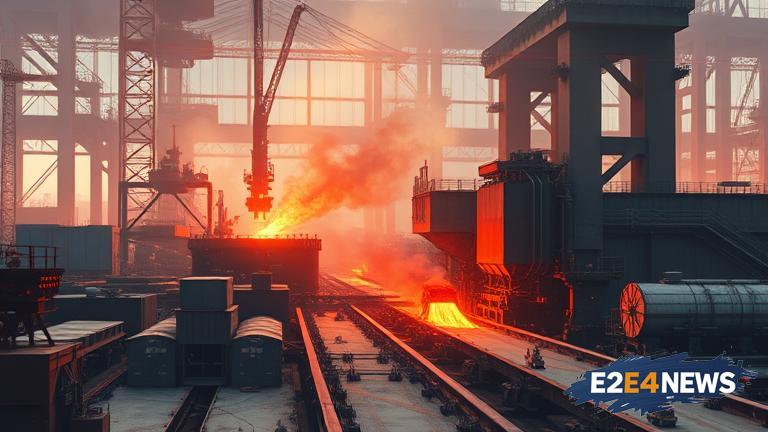China, the world’s largest steel producer, has witnessed a decline in its crude steel output for the month of June. This decrease is primarily attributed to the weakening demand in the domestic market, coupled with production cuts implemented by steel mills. The country’s steel industry has been facing significant challenges, including reduced demand from the construction and manufacturing sectors. As a result, many steel mills have been forced to cut production to avoid accumulating inventory and incurring losses. The decline in crude steel output is also a reflection of the Chinese government’s efforts to reduce carbon emissions and promote more sustainable production practices. The steel industry is a significant contributor to China’s carbon footprint, and the government has been implementing policies to encourage the use of cleaner production methods. Despite the decline in output, China’s steel exports have remained relatively stable, with many steel mills opting to export their products to other countries. However, the decline in domestic demand has had a negative impact on the industry, with many steel mills struggling to maintain profitability. The Chinese government has been working to stimulate demand and support the industry, including implementing policies to encourage investment in infrastructure projects. Nevertheless, the outlook for the steel industry remains uncertain, with many analysts predicting that the decline in demand will continue in the coming months. The decline in crude steel output has also had a ripple effect on the global steel market, with many countries experiencing a decline in steel imports from China. The global steel market is highly competitive, and the decline in Chinese steel exports has created opportunities for other countries to increase their market share. In addition to the decline in demand, the Chinese steel industry has also been facing challenges related to rising production costs, including increased prices for raw materials such as iron ore and coal. The industry has also been impacted by trade tensions and tariffs imposed by other countries, which have reduced demand for Chinese steel exports. Overall, the decline in China’s crude steel output is a significant development that reflects the challenges facing the industry, including weakened demand, production cuts, and rising production costs. The industry is expected to continue to face challenges in the coming months, and the Chinese government will need to implement policies to support the industry and stimulate demand. The decline in crude steel output has also highlighted the need for the industry to adopt more sustainable production practices and reduce its carbon footprint. As the industry continues to evolve, it is likely that we will see a greater emphasis on cleaner production methods and more efficient use of resources.




